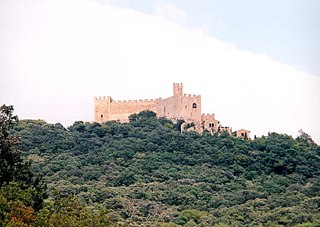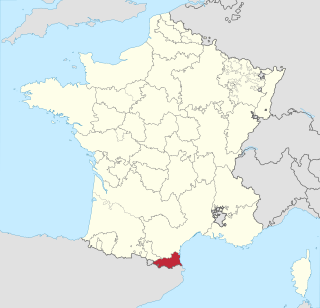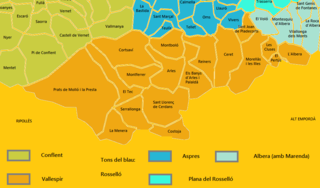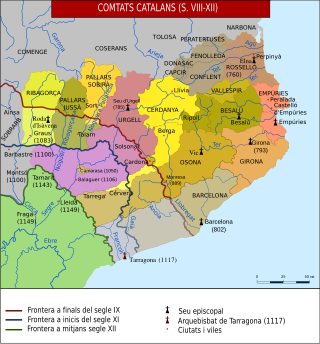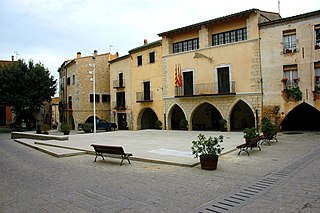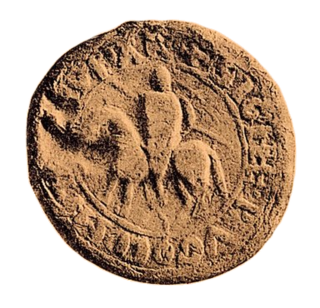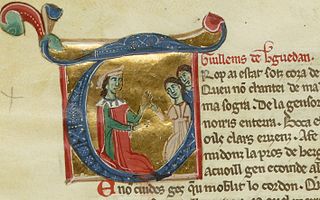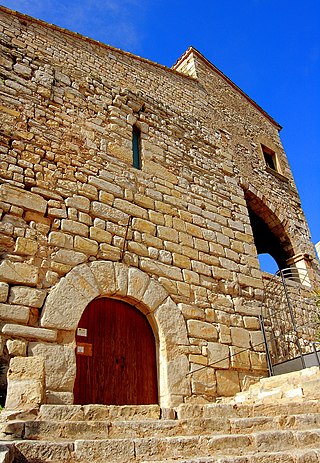Feudal castle
Panoramic view of the castle from the Medàs pass
Mentioned in the memorial of grievances (grudges) addressed by Count Ponç I of Empúries to his cousin, Count Gausfred II of Rosselló, and to his son, Guislabert (dateable around 1040-1071), in which the former protested the probably recent construction of this castle (Castrum de Recosin) by the latter on an alluvium that they had entrusted with land in the county of Empúries.
The construction of this first documented castle in Requesens is part of the disputes between the two counties following their separation at the end of the 10th century. The counts of Rosselló maintained its domain, within the county of Empúries, until its extinction. The lordship of Requesens (dominicaturam de Rechesen) was recognized by the agreement between the respective counts in 1075 and the domain over the castle (castrum Rechosindo) is mentioned again in the renewal of that one in 1085 and in another agreement of the year 1121. The Roussillon counts or the personages to whom it was enfeoffed had a castle there, who during the first half of the twelfth century was a member of the same count family, a clear indicator of the interest they had there.
All these characters owed allegiance to the count of Empúries and also to the viscount of Peralada, within whose territories the fortress was located. During the twelfth century, the confrontations between all these, as a result of the alliance between the Rocabertís, viscounts of Peralada, and the counts of Rosselló, made Requesens castle a living factor of conflict. One of these confrontations, precisely known as the War of Requesens (1047-1072), began with the capture of the castle by Count Ponç II d'Empúries. He saw, uneasy, how his domains were isolated and surrounded by the lands of a single lord, the count of Barcelona, who also seized the county of Rosselló in 1172. To pacify the area, the new lord of Rosselló, the count-king Alfonso the Chaste then renounced the rights that corresponded to him over Requesens in favor of the count from Emporita, who thus obtained full dominion.
There are very few remains of the castle that was the protagonist of these events, located in the area of the upper enclosure, which in the 13th century, when the new outer enclosure was built, was known as the greater or upper fortress.
At the end of the twelfth century and during the thirteenth century, different individuals known as Requesens appear documented, who were, apparently, castlans or lords of the castle by the count of Empúries. Thus, an Arnau de Requesens (died after 1256) is documented in Girona in 1181 and a Guillem de Requesens (died after 1262) is listed as lord of the castle. It is assumed, although no proof has been found, that from the lineage of these lords of the castle -which, on the other hand, is no longer documented later- the lineage of the Requesens, from merchants and citizens, later ennobled (counts of Palamós), documented in Tarragona from 1272 and who gave important characters to the history of Catalonia during the 15th and 16th centuries. The aforementioned Guillem de Requesens acquired, by marriage, the tower or fortress of Cabrera in the city of Girona, called Cabrera castle and then Requesens, which was held by the Montcadas. Guillem's inheritance would pass to the Botonacs and later (beginning of the 14th century) to the Castellnou, Roussillon nobles who sometimes also called themselves Requesens.
During the crusade against the Crown of Aragon, the castle and its eminent lord, the Count of Empúries, remained loyal to Peter the Great during the invasion and this is what Bernat Desclot records in his Chronicle. In this war he was besieged by the French (summer of 1285), but they failed to take him. But in 1288 it was briefly occupied and looted by a French army in the service of James II of Mallorca, who invaded the Empordà.
Pere I d'Empúries (1325-1341) acquired from the Castellnou the lordship of the Requesens castle, thus completing the county domain. It remained under the control of the counts of Empúries until the reversion of the county to the crown in 1402, when the will of the last count, Pere II d'Empúries, was declared null in favor of his wife Joana de Rocabertí and, alternatively, of his brother-in-law, Viscount Jofre VI de Rocabertí. Despite this, this will was successfully invoked by Viscount Dalmau VIII de Rocabertí to obtain from the new Trastàmara kings some property in the territory of the old Emporium county, including the castle of Requesens (1418), donated by Alfons the Magnanimous The viscounts of Rocabertí (later counts of Peralada) would keep possession until the end of the 19th century.
Nineteenth century mansion
Between 1893 and 1899 it was completely rebuilt by its owners, the last counts of Peralada resident in the territory, Tomàs de Rocabertí-Boixadors Dameto i de Verí and his sister Joana-Adelaida, with the intention of turning it into a summer residence and in accordance with the neo-medieval criteria then in vogue, as they had also done in the castle of Peralada.
However, unlike other examples of nearby neo-medieval reconstructions (Carcassonne), the style chosen does not deviate from that of the Mediterranean area. The works were directed by the master builder Alexandre Comalat, who reconstructed the still visible remains of the medieval building with the same layout and the same granite stone from the mountain with which it had been built, so that it is currently very difficult to distinguish the original part of the reconstructed one.
Of the medieval building, little more than bastion locks, the square north tower and part of the gate of the upper enclosure, dating from the twelfth and fourteenth centuries, seem to persist. Exceptional photographs from before and during the reconstruction process are preserved, some of which were taken by Count Tomàs de Rocabertí himself, one of the first amateur photographers of the region.

